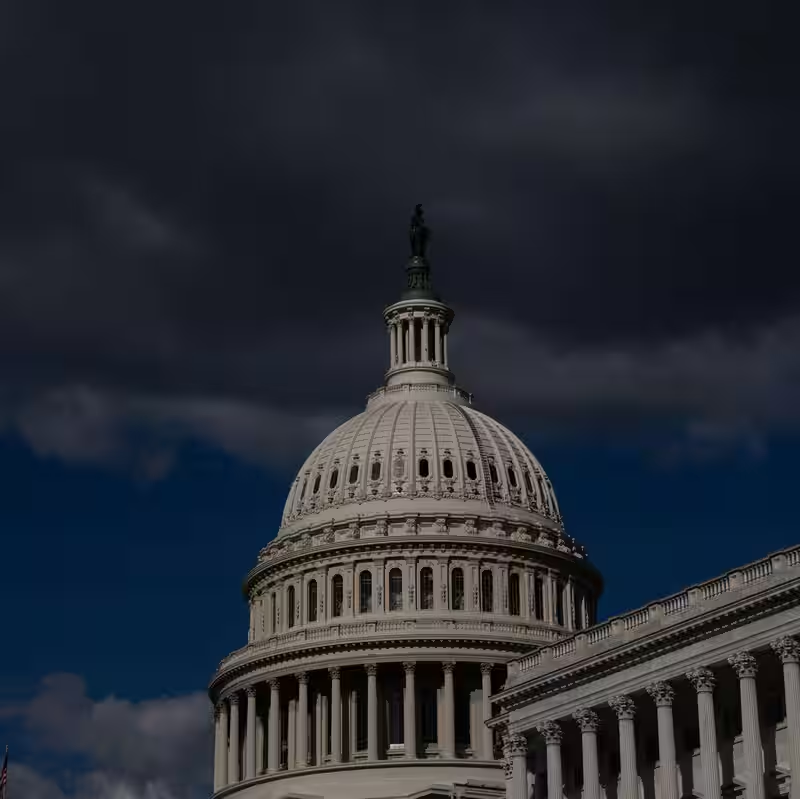Trump Reissues Layoff Threats Amid Escalating Government Shutdown Blame Game
As the federal government entered its fifth day of partial shutdown on Sunday, October 6, 2025, former President Donald Trump reignited political tensions by renewing threats of mass layoffs—this time targeting federal workers—while top Democratic and Republican leaders traded sharp accusations over who’s really to blame for the impasse.
Shutdown Enters Day Five With No End in Sight
The government shutdown, now in its fifth consecutive day, has halted nonessential federal services, furloughed thousands of employees, and disrupted everything from national park operations to IRS processing. Yet despite mounting public pressure, negotiations between Capitol Hill’s top leaders remain deadlocked.
Senate Majority Leader Chuck Schumer (D-N.Y.) and House Speaker Mike Johnson (R-La.) each accused the other of lacking seriousness in talks to fund the government before the fiscal year began on October 1.
“Speaker Johnson refuses to come to the table with a realistic proposal,” Schumer said in a press briefing Saturday. “This shutdown is entirely avoidable—and entirely on the GOP’s shoulders.”
Johnson fired back, calling Schumer’s stance “performative obstruction” and insisting Democrats are using the shutdown to rally their base ahead of the 2026 midterms.
Trump’s Layoff Threat Adds Fuel to the Fire
Meanwhile, Donald Trump—campaigning aggressively for a potential 2028 presidential run—amplified the chaos with a late-night Truth Social post threatening to “drastically reduce the bloated federal workforce” if elected again.
“If they can’t do their jobs during a shutdown, why pay them at all?” Trump wrote, echoing rhetoric from his first term. The comment drew swift condemnation from federal employee unions and bipartisan lawmakers who warned such statements could further destabilize an already fragile negotiation environment.
This isn’t the first time Trump has floated mass layoffs. In 2020, his administration pushed for a controversial plan to reclassify federal workers to make them easier to fire—a proposal that stalled in court.
Who’s Affected by the Shutdown?
While essential services like air traffic control and border security continue, many federal agencies have scaled back dramatically:
- National Parks: Closed or operating with minimal staff
- FDA: Delayed food safety inspections
- IRS: Tax processing and customer service halted
- EPA: Environmental enforcement paused
- Small Business Administration: Loan approvals frozen
Public Opinion and Historical Context
According to a new Washington Post-ABC News poll, 58% of Americans blame congressional Republicans for the shutdown, while 32% point to Democrats. Only 9% say both sides share equal responsibility.
Historically, shutdowns rarely last beyond a week—but political brinkmanship has grown more common in recent years:
| Year | Duration | Primary Cause | President |
|---|---|---|---|
| 2013 | 16 days | Obamacare funding | Obama |
| 2018–2019 | 35 days | Border wall funding | Trump |
| 2025 | Ongoing (Day 5) | Spending caps & social programs | Biden |
What’s Next?
Leaders from both parties have signaled willingness to return to negotiations Monday, but deep ideological divides—particularly over defense spending versus social safety net funding—remain unresolved.
As Trump’s layoff threats echo across social media, pressure is mounting on Congress to act before the economic ripple effects worsen. For now, millions of federal workers—and the Americans who rely on their services—are left in limbo.
Sources
- The New York Times: Trump Renews Layoff Threats as Shutdown Accusations Continue to Fly
- The Washington Post: Government Shutdown Enters Fifth Day With No Resolution
- USA Today: Schumer and Johnson Trade Barbs as Shutdown Drags On
- U.S. Office of Personnel Management: Shutdown Guidance for Federal Employees




